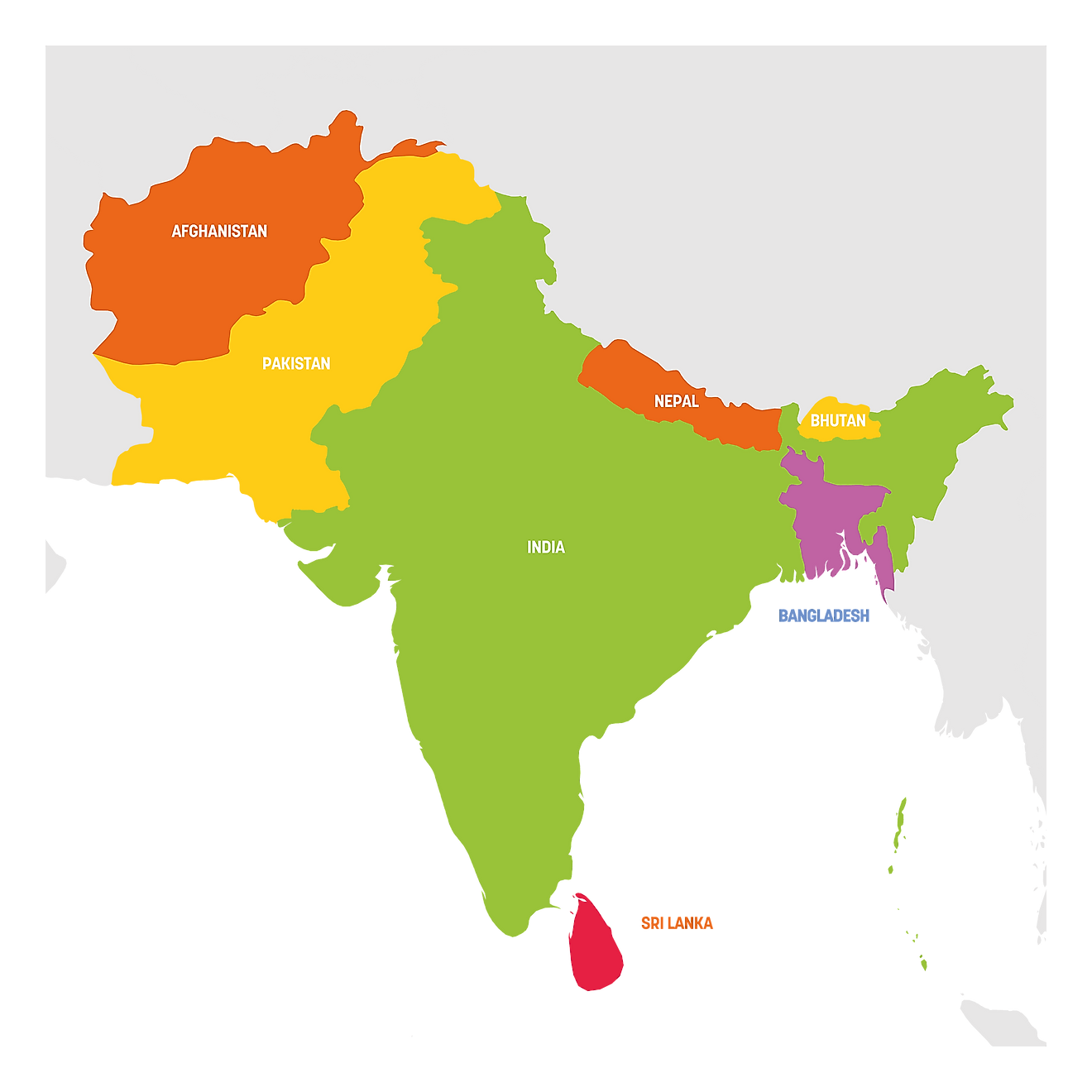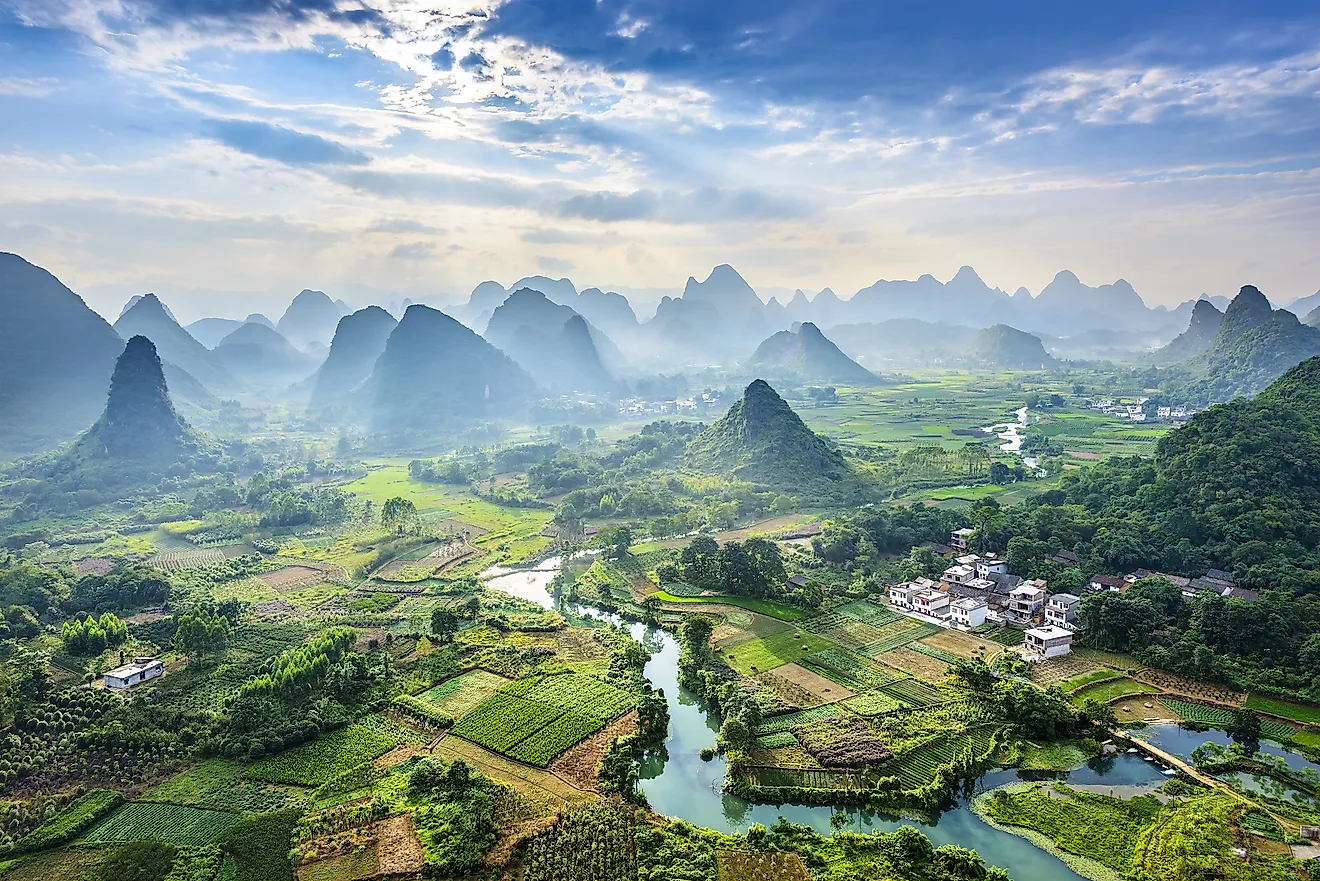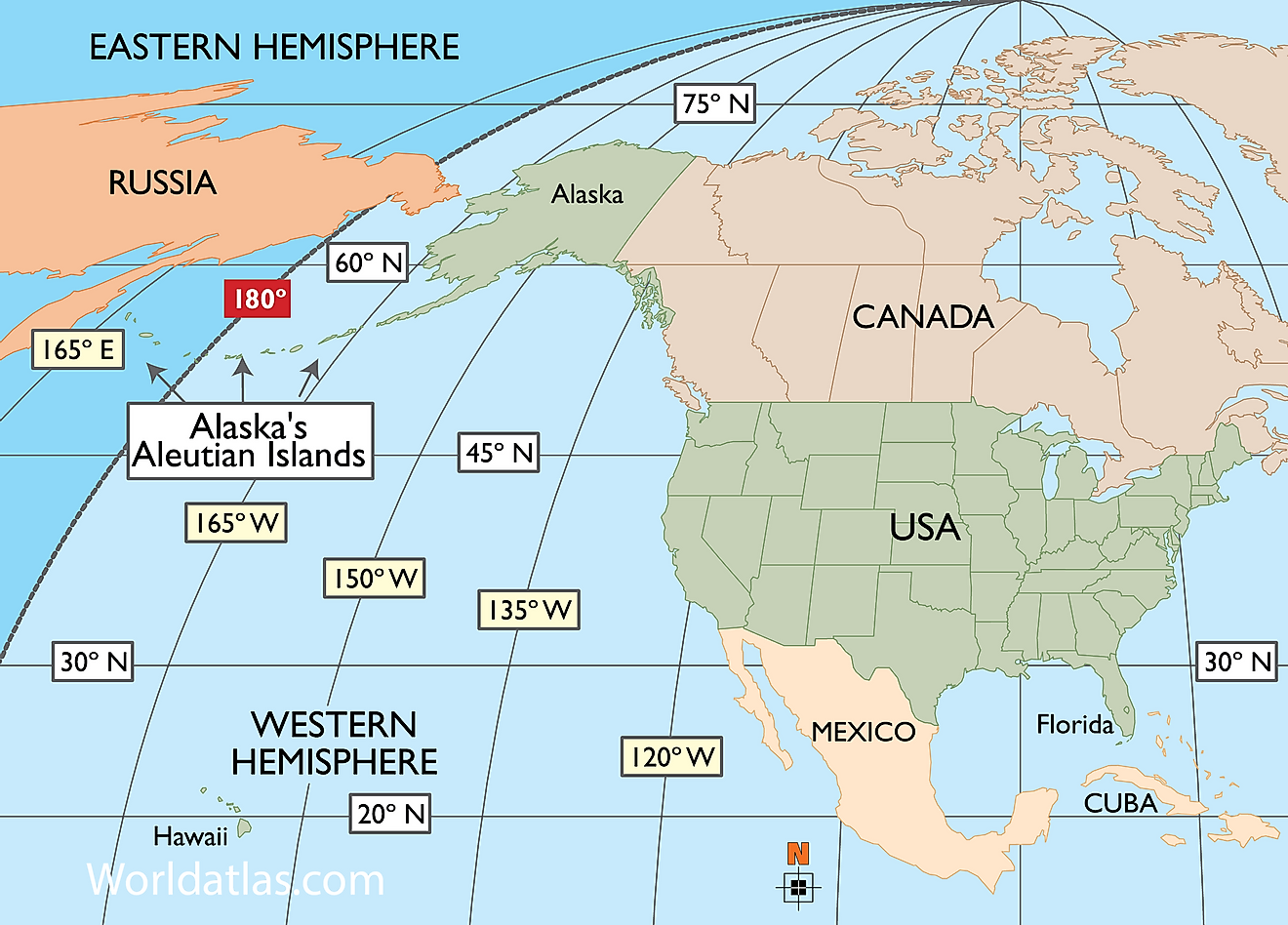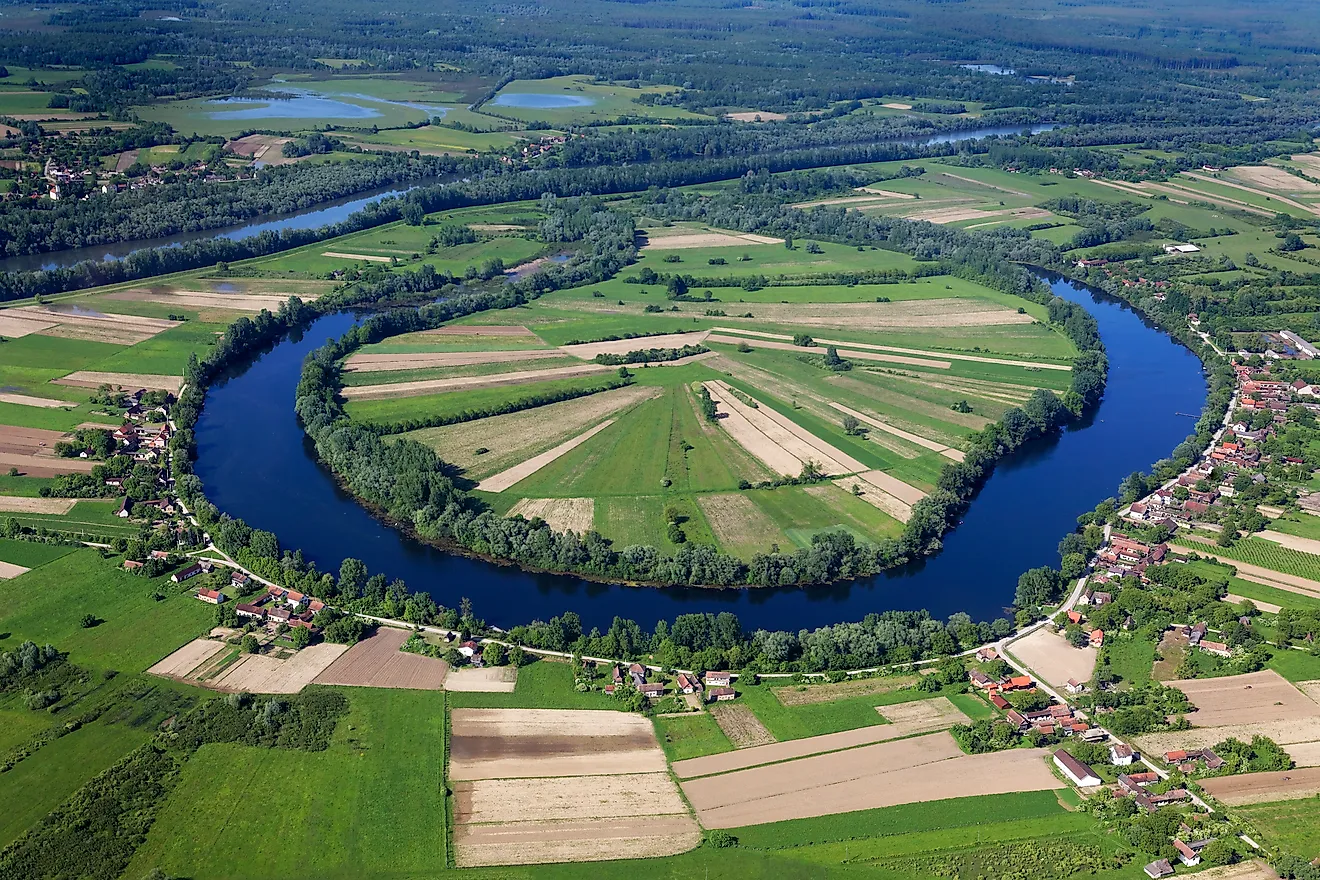Sinai Peninsula

- The Sinai Peninsula is a triangle-shaped peninsula that serves as a land bridge connecting Asia and Africa.
- About 600,000 people live in the Sinai today.
- The Bedouin are the oldest inhabitants of the Sinai, having lived on the peninsula for 2000 years.
- The Sinai is the sovereign territory of Egypt.
- Mt. Sinai, which was where Moses received the Ten Commandments from God, according to the Bible, is situated on the Sinai Peninsula.
The Sinai Peninsula is a land bridge that connects the Middle Eastern part of Asia with North Africa. When people think about the Sinai, the first thing that often comes to mind is the Biblical story of Exodus, when the ancient Israelites, who had just been freed from bondage in Egypt, journey to Mt. Sinai, where Moses receives the Ten Commandments from God.
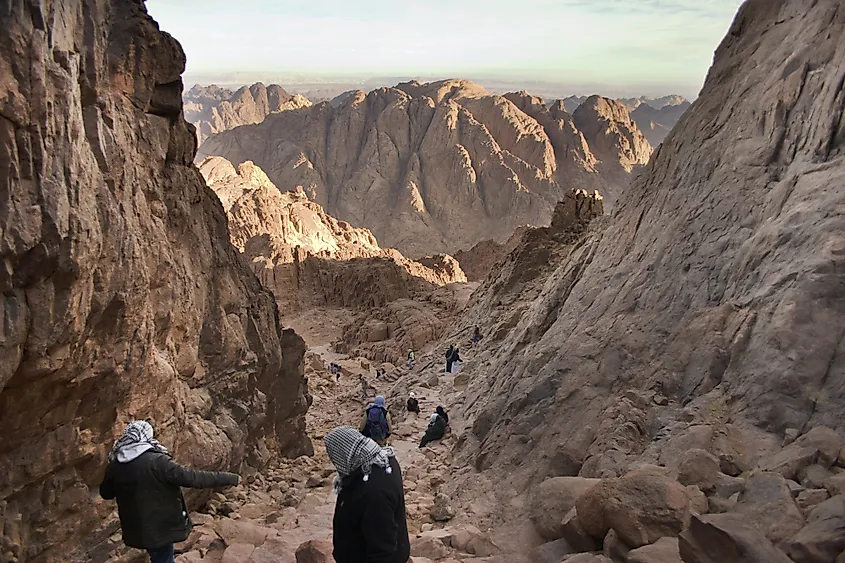
But there is a lot more to the Sinai Peninsula than just a Bible story. Over the centuries, the Sinai has figured prominently in the history of the Middle East. Today, the peninsula is a popular tourist site, though unfortunately, it is also popular with people who have criminal intentions.
Contents:
Geography
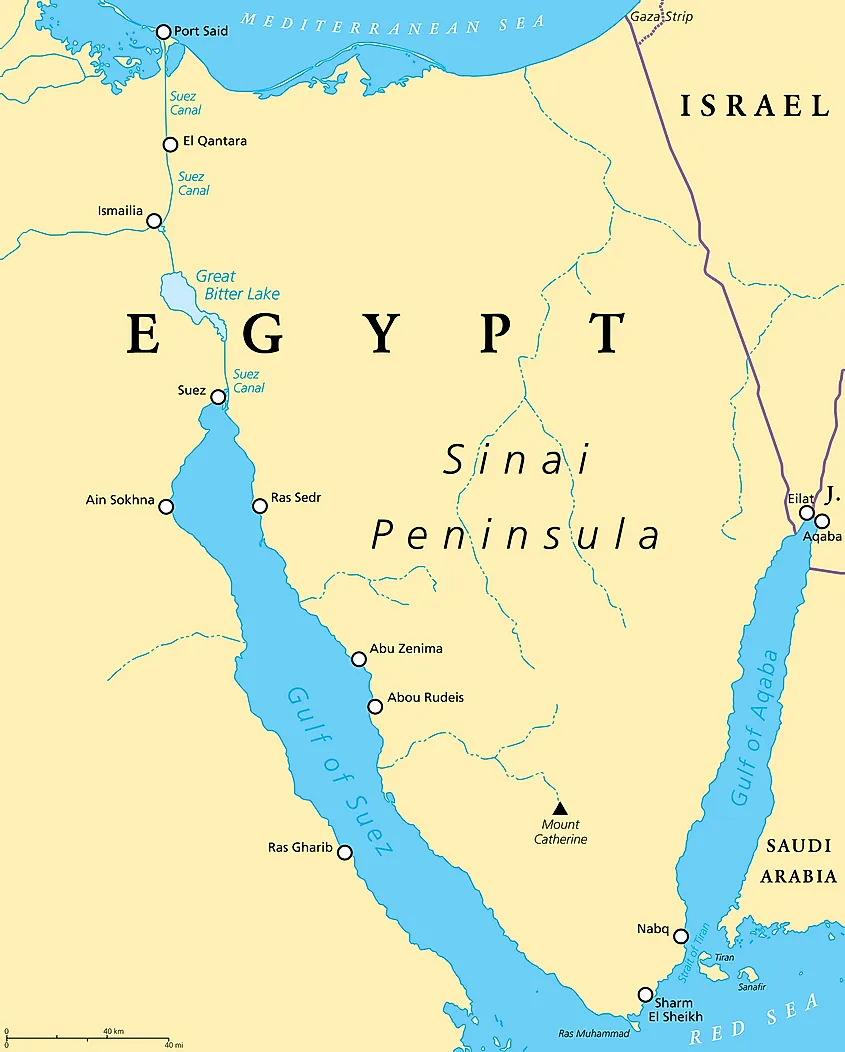
The Sinai Peninsula, which is part of Egypt, is shaped like a triangle, and as previously mentioned, serves as a land bridge between the Middle Eastern portion of Asia and North Africa. The peninsula is bordered to the north by the Mediterranean Sea, and to the east by Israel and the Gaza Strip. To the west of the Sinai Peninsula is the Suez Canal, across which lies the African part of Egypt. The Sinai is bordered to the southwest by the Gulf of Suez, and to the immediate south by the Red Sea. The Gulf of Aqaba borders the Sinai in the southeast. The total land area of the Sinai is approximately 60,000 sq. km.
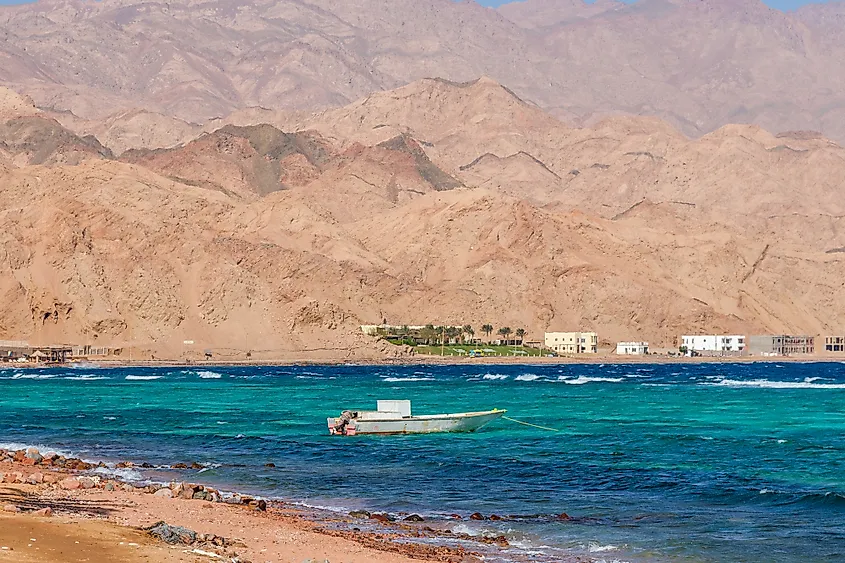
The Sinai Peninsula can be divided into three geographic regions. The first is the northern part, which is characterized by sand dunes, fossil beaches, and dried up river beds known as wadis. The terrain is flat and uniform, though sand and limestone hills can be found in the region of Gebel Maghara (Mt. Maghara). The central part of the Sinai Peninsula largely consists of the el-Tih Plateau. This plateau is composed of highlands made of limestone, which stretch south until they reach the Sinai’s third geographical region, comprised mainly of granite and volcanic rock. In this third region are granite and basalt escarpments that slope into the Red Sea and the Gulf of Aqaba. It should be noted that the eastern boundary of the Sinai Peninsula sits on a geological fault zone known as the Great Rift Valley, which stretches from the upper Jordan River valley all the way through the Red Sea, and into Africa.
Flora And Fauna
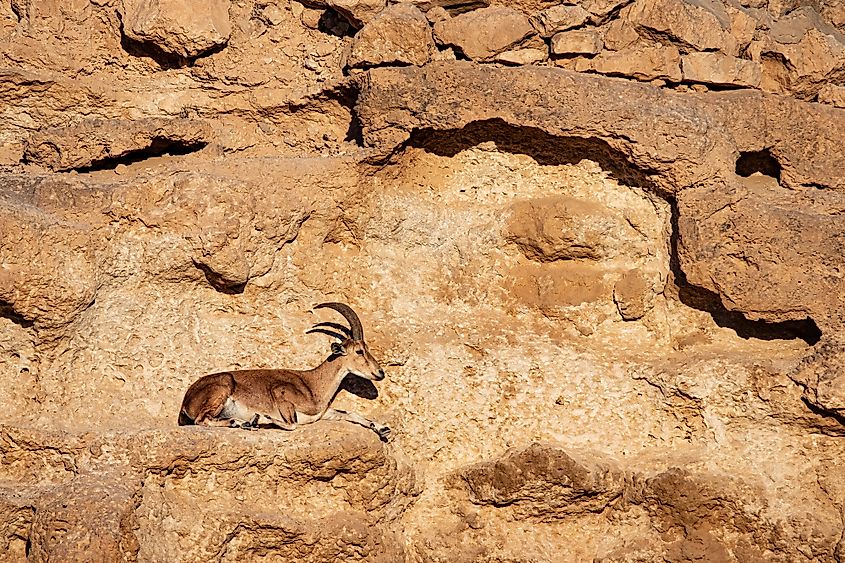
Although the climate of the Sinai Peninsula is very hot and dry, it is not devoid of life. Indeed, it is home to many species of mammals, snakes, other reptiles, and birds. The mammal species that are commonly found in the Sinai are leopard, ibex, and Golden Spiney Mice. There are also several species of snakes found on the Sinai Peninsula, most of which are poisonous. These include Carpet Vipers, Black Cobras, and Horned Vipers.
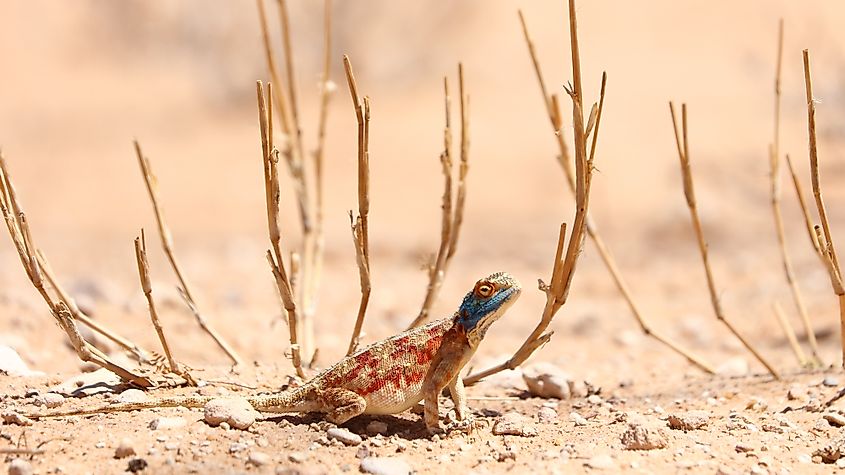
Lizards, such as the blue-headed Agama, can also be found in the Sinai. In many cases the mammals and snakes of the peninsula camouflage themselves to fit in with the desert terrain. The coastlines of the Sinai are where most of the Peninsula’s bird life is found. Some of the Sinai Peninsula’s most interesting wildlife is found, not on the peninsula itself, but under water, among the coral reefs that dot the Sinai coastline.
The People Of The Sinai Peninsula
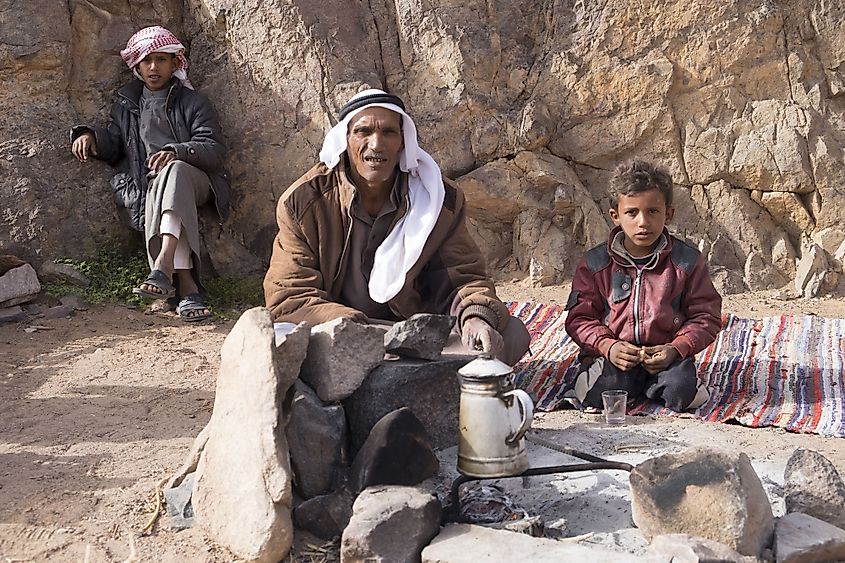
Archeological findings indicate that the Sinai Peninsula has been inhabited by humans as far back as 200,000 years ago. Many ancient peoples made the peninsula their home, or at least passed through it. These include the ancient Egyptians, as the Sinai was domain of the Egyptian Pharaohs in ancient times. The ancient Israelites, according to the Bible, passed through the deserts of the Sinai on the way to the land of Canaan in present-day Israel. The religious texts of Judaism, Christianity, and Islam mention the names of several different groups who inhabited the Sinai Peninsula. These include the Horites (mountain people), Rephaim (giants), Edomites (descendants of the Biblical figure, Esau), Amalekites, and Midianites, who were said to be nomads from the Arabian Peninsula. A group of Hellenized Egyptians also lived in the Sinai Peninsula for many centuries.
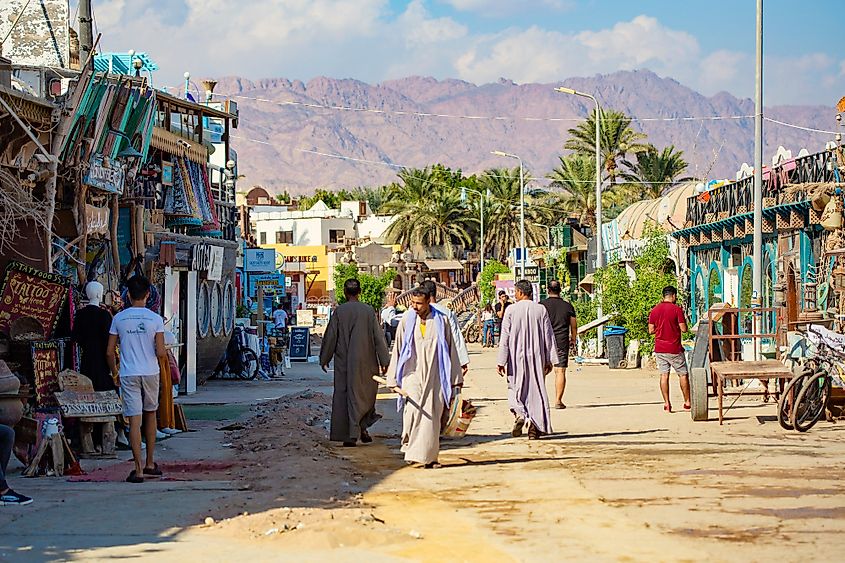
Today, the Sinai is mostly inhabited by Arab Egyptians and Bedouins. The Bedouins are the oldest population on the peninsula, having lived there over a period of 2000 years. They are mostly descendants of Bedouins that migrated to the Sinai from the Arabian Peninsula, though there is a group of them known as the Jabaleya, whose origins are in the Balkan Peninsula. Most of the Bedouins that inhabit the Sinai are members of seven different tribes, who are collectively known as the Tawara federation. They are traditionally a nomadic people, which means that they move frequently from place to place, though most now do have permanent homes. About 600,000 people in total currently live on the Sinai Peninsula.
Brief History
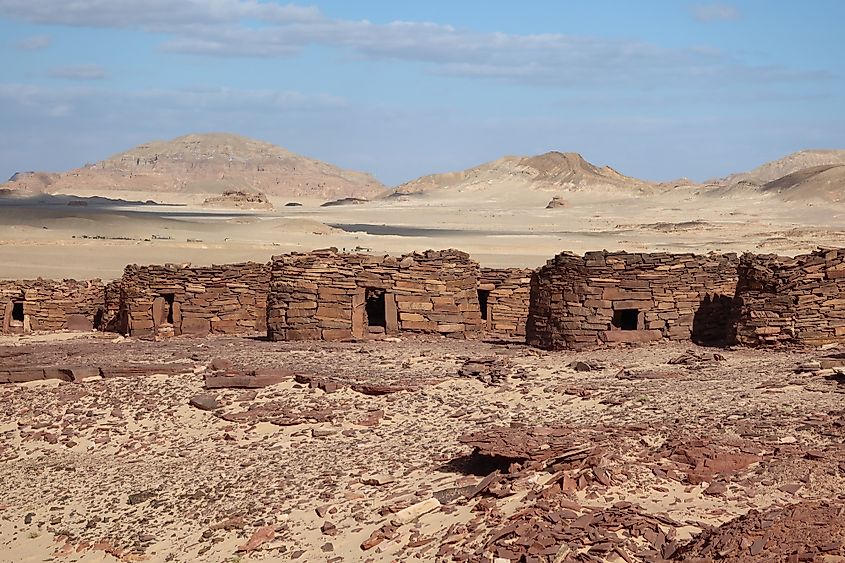
The name “Sinai” is said to come from an ancient lunar deity called Sin. In ancient times, the Sinai Peninsula was nicknamed the Land of Turquoise, because turquoise, along with copper, was mined there. Indeed, people migrated to the peninsula during the Early Bronze Age in search of valuable minerals. Thus, the region became a popular place for ancient mining operations. These mining operations eventually caught the attention of Egypt’s pharaohs, who brought the Sinai under Egyptian control around 3000 BCE. The Sinai also served as a military route between ancient Egypt and the powerful civilizations of the Fertile Crescent.
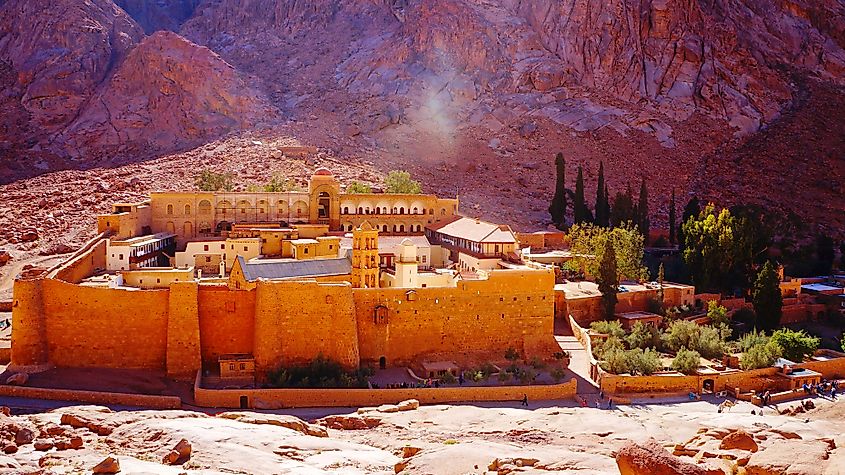
All the patriarchs of the Bible, including Moses and even Abraham before him, are believed to have lived in, or at least passed through, the Sinai Peninsula. The time of the Israelites’ Exodus has been dated to around 1400 BCE. According to the Bible, the Israelites spent 40 years wandering the deserts of the Sinai, before eventually arriving in the land of Canaan (present-day Israel). Successive ancient empires have used the Sinai to invade and conquer Egypt, including the Assyrian Empire, the Persian Achaemenid Empire, and the Macedonian Empire. The last ancient empire to control the Sinai was the Roman Empire. The Sinai remained under the control of the East Roman Empire after the fall of the West Roman Empire in 476 CE. Around the year 550 CE, the Roman emperor Justinian ordered the construction of a monastery on what was believed to be the Mt. Sinai mentioned in the Bible. The monastery would be known as St. Catherine’s Monastery.
The Sinai Peninsula would remain under the control of the East Roman Empire almost continuously until the 7th century CE, when the forces of the rapidly expanding Muslim Caliphate pushed into the Sinai on their way to conquer Egypt. Thus, the Sinai became Muslim territory, and its people were converted to Islam. In the 16th century, the Sinai came under the rule of the Ottoman Empire, the last of the Islamic Caliphates.
In the late 19th century, Egypt, including the Sinai Peninsula, became part of the British Empire. British rule in Egypt would last until 1922, when the country was granted independence. However, the Suez Canal, which separated the Sinai Peninsula from the rest of Egypt, remained under British control. In 1956, Egyptian President Gamal Abd al-Nasser, attempted to nationalize the canal and proclaimed Egypt’s sovereignty over it. Shortly thereafter, British, French, and Israeli forces attacked Egypt. The Suez Canal Crisis ended with the withdrawal of foreign troops from the Sinai, while the Egyptians retained control over the vital and strategic canal.
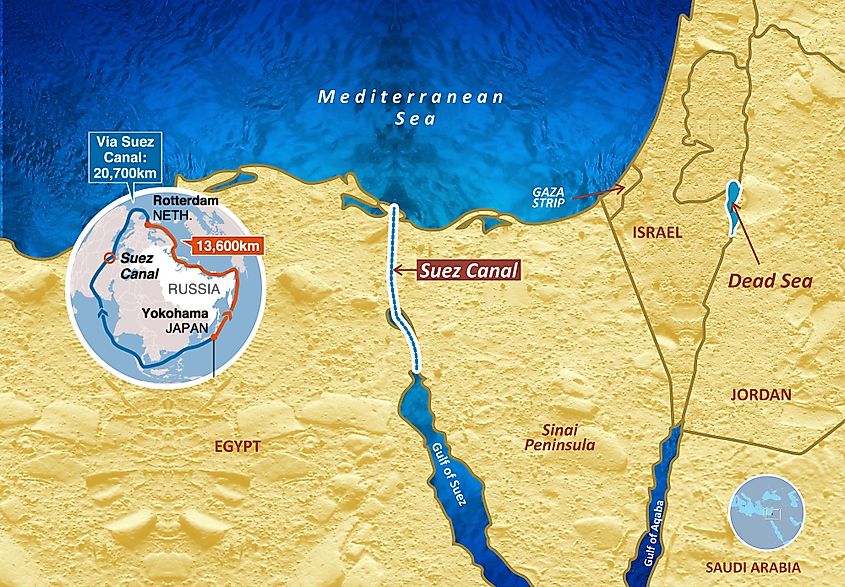
Eleven years later, the Six Day War between Israel and its Arab neighbors, including Egypt, took place. During the course of the short conflict, Israel invaded and occupied the Sinai Peninsula. The war ended with the Jewish state in control of the entire peninsula. In 1973, Egypt attempted to reclaim the Sinai in what was known as the Yom Kippur War or October War. The war ended with a ceasefire that allowed the Egyptians to reopen the Suez Canal after it had been closed following the 1967 war. In 1979, Egypt and Israel concluded a peace treaty, which stipulated that Israel would withdraw from the Sinai Peninsula in exchange for peace with Egypt. By 1982, Israel completed its withdrawal from the peninsula, thus putting it back in Egyptian hands.
The Sinai Peninsula Today
Today’s Sinai Peninsula is sparsely populated. Law and order on the peninsula is sometimes non-existent, which is why the area is very popular with criminal elements, including terrorists and smugglers. There are periodic clashes between Egyptian government forces and fighters belonging to terrorist groups like Al-Qaeda and the Islamic State. Since 2007, the Egyptian government has been enforcing a blockade on the Gaza Strip, which lies adjacent to the northeast of the Sinai, and is currently ruled by an Islamic militant group called Hamas. Thus, the Egyptians have tried to prevent the smuggling of weapons and other materials into the small Palestinian enclave.
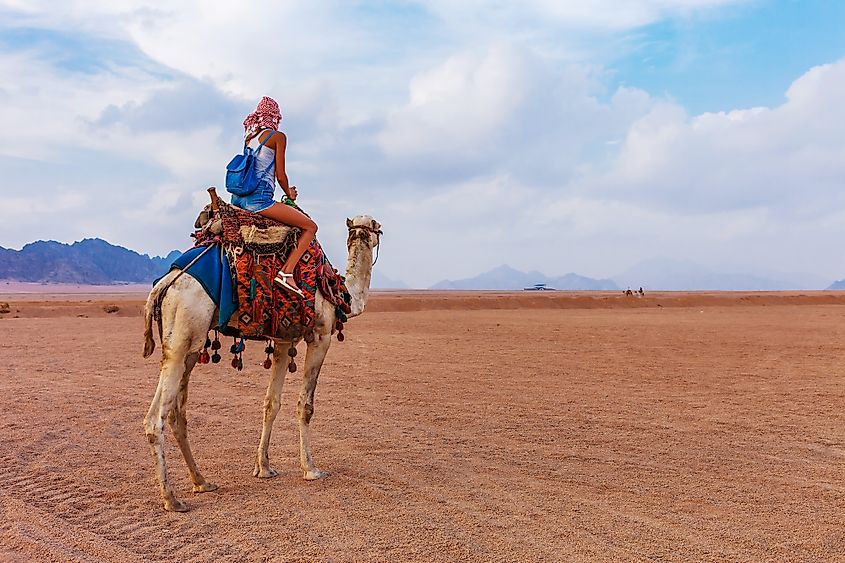
Not everything about the Sinai Peninsula, however, has negative connotations. Indeed, the Sinai has become very popular with tourists, including people coming to see the St. Catherine’s Monastery on Mt. Sinai. The Sinai is also popular with tourists seeking an underwater adventure that often involves snorkelling or scuba diving in the crystal blue waters on the Sinai coasts, which contain beautiful coral reefs and an abundance of marine life.








